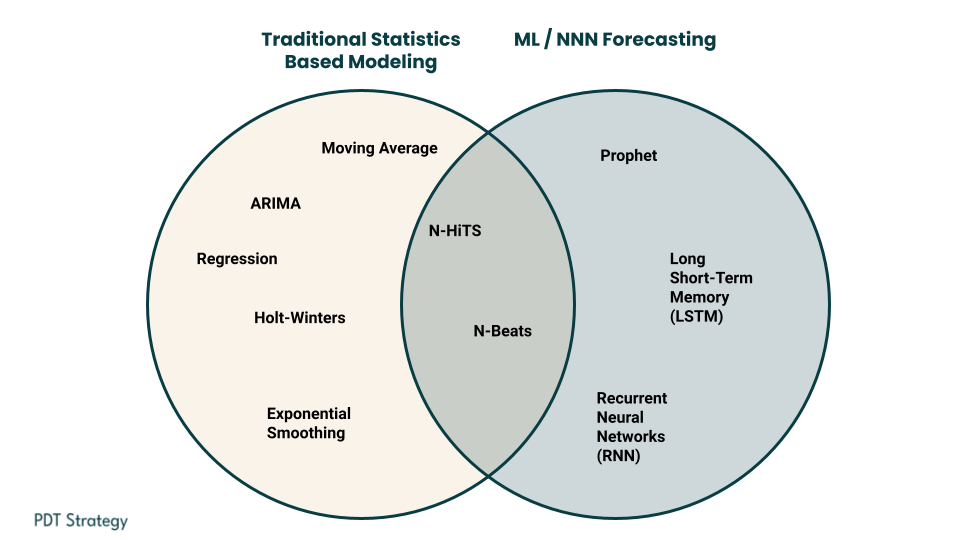Explainable Statistics-Based Forecasting vs. Black-box ML Methodologies
Historically, a notable gap has persisted between traditional, explainable statistics-based forecasting models—like ARIMA, Holt’s Winter, Exponential Smoothing, and Moving Averages—and the more opaque machine learning methodologies like Facebook’s Prophet, LSTM, and others. These are often viewed as two distinct schools of thought: one grounded in time-tested, easily interpretable techniques, and the other exploring the depths of high-capacity, black box algorithms. However, in recent times, we have observed a fascinating trend. New innovations in the forecasting realm are beginning to blur these boundaries. Neural network-based models, known for their intricate web of interconnected nodes and layers, are now incorporating explainable components of trend, seasonality, and randomness. These elements have traditionally been the hallmark of simpler models like Holt’s-Winter.
Among the key catalysts driving this synthesis is the surge in the popularity of generative AI products like ChatGPT and its competitors. Their success and growing presence in various industries have served as a testament to the transformative potential of AI/ML. As these products demonstrate their capabilities, from nuanced natural language processing to deep content understanding, it becomes clear that AI is not just a theoretical construct but a tool capable of delivering tangible, game-changing results.

How Can AI transform Demand Forecasting
Overriding Question: With the spotlight firmly on AI, businesses and thought leaders are prompted to ask: how can these advancements be harnessed to revamp supply chain processes? Specifically, in the critical area of demand forecasting, how can AI shape the future?
Bridging the Gap
The answer lies in the development and adoption of hybrid technologies. As we transition into this new era of AI-augmented forecasting, it’s imperative to recognize the value of convergence. By merging the best of both worlds—traditional forecasting’s transparency with neural network’s immense capacity—we can create models that are not only powerful and accurate but also understandable and actionable.
These hybrid models are set to redefine the supply chain landscape. Businesses that can seamlessly integrate them into their operations will benefit from more accurate forecasts, optimized inventory levels, reduced wastage, and an overall more agile and responsive supply chain.
In conclusion, as the lines between traditional forecasting and neural network-based models blur, industries stand at the cusp of a forecasting revolution. A future where the predictions driving businesses are both powerful and explainable awaits.
